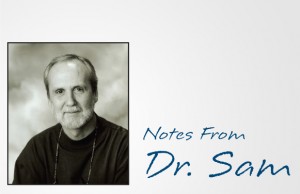Peace of Mind

Sometimes the best stories start with everything going wrong. Just ask the guys who planned Woodstock, one of the largest documented “parties” ever thrown.
The original Woodstock Music and Art Fair in August of 1969 wasn’t supposed to be a cultural revolution. It was supposed to be a fundraiser to help the organizers build a recording studio. Organizers booked an incredible lineup—Jimi Hendrix, Janis Joplin, The Who, Santana, Joe Cocker, and many more—and expected around 50,000 attendees.
The first major snag came before the event even started. The town of Wallkill, New York, the original site planned for the event, pulled the plug just weeks before the scheduled date. With time running out, a dairy farmer named Max Yasgur offered to host on his land in Bethel, New York, and the organizers had little choice but to pivot.
The second snag was even bigger. The site was designed for 50,000 people. More than 400,000 showed up. What followed was a logistical nightmare—clogged roads, rain, mud, food shortages, and woefully inadequate toilets.
The fences were overrun, and Woodstock became, by necessity, a free concert. The result? A financial disaster, losing over $1 million. Not because no one came, but because they couldn’t figure out how to collect from the huge number that showed up.
Despite the chaos—or maybe because of it—Woodstock became legendary. In the aftermath, the organizers made a few brilliant pivots. They turned event footage into Woodstock: The Documentary, which won the Academy Award for Best Documentary in 1970 and grossed over $50 million.
The soundtrack they released with the documentary also sold millions. The Woodstock name became a brand, generating income from clothing, posters, mugs, and other memorabilia. Even today, books, anniversary editions, box sets, and specials continue to sell. Woodstock didn’t go as planned—but those who stuck with it found success anyway.
As a Certified Elder Law Attorney, I meet with families every week who feel like they’re in the middle of their own Woodstock-level disaster. Only, theirs is far more personal. A sudden need for long-term care can be overwhelming, especially when the financial resources needed to fund that care just aren’t there.
In these situations, we often look at Medicaid benefits as a way to help cover long-term care costs. Medicaid comes with strict income and asset limits. Because of this, many families assume they won’t qualify and, therefore, don’t even consider it. But just like the Woodstock organizers, with the right pivots at the right time, there’s often a path forward that’s far better than expected.
Medicaid won’t solve every problem, but it can dramatically ease the financial burden of long-term care. And that can make a world of difference for families facing hard decisions.
When I bring up Medicaid in client meetings, I often hear things like, “I thought we made too much income to qualify,” or “We have too many assets to even hope for help.” It’s understandable. The rules are strict. But in the vast majority of cases, there’s a way to qualify even when the planning is last minute—without having to spend down every dollar on care first.
In the weeks after the original Woodstock, the organizers could have easily called it quits. They were drowning in bills. They could have walked away feeling like the whole thing was a failure. But they adjusted their thinking, found a new path, and things turned out better than they’d ever imagined.
Like the men behind Woodstock, you might find that what started out as a disaster turns into something surprisingly manageable—with the right guidance. At The Elrod Firm, we have helped countless families navigate the Medicaid process, and if you find yourself in that same position, we’re here to help you make the pivots you need.
You don’t have to go through this alone. Visit our website at ElrodFirm.com to learn more, then call for a no-charge consultation. ν









0 comments